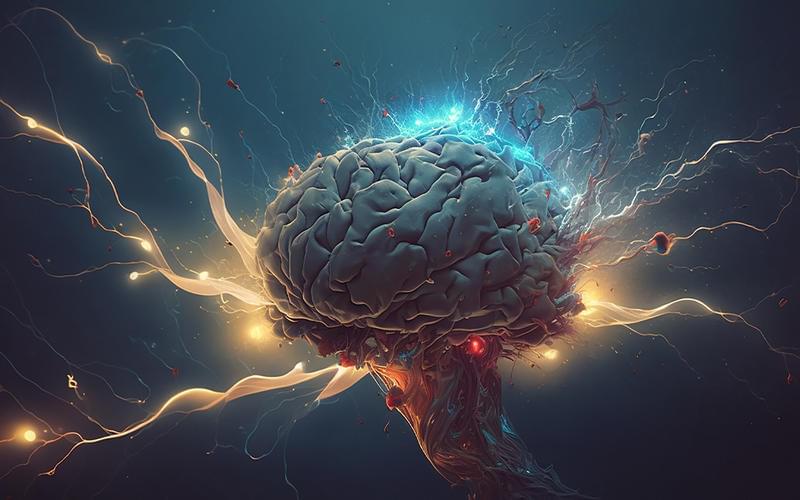Quantum mechanics had a disordered beginning in the 1920s, and is still developing today. Science is rarely a done deal, says Chanda Prescod-Weinstein
Columnist By Chanda Prescod-Weinstein

Quantum mechanics had a disordered beginning in the 1920s, and is still developing today. Science is rarely a done deal, says Chanda Prescod-Weinstein
Columnist By Chanda Prescod-Weinstein


The relationship between the individual human subject and the world was once the central focus of Western philosophy. Modern neuroscience has instead tended to assume that the world is purely material and physical, and the problem of consciousness a question of how to generate thought from matter. Yet, we are no closer to solving the deep puzzle of consciousness and many argue that the American philosopher Thomas Nagel is right when he maintains that the question of consciousness ‘cannot be detached from subject and object’.
Is the notion that the world is purely material a fundamental mistake? Would we be more likely to unlock the mysteries of consciousness by once again adopting the framework of the subject and object? Or will slow, piecemeal advances in neuroscience and analytic philosophy eventually yield the answers that we have been searching for?
Revolutionary cognitive psychologist Donald Hoffman (joining us live from across the pond), neuroscientist Hannah Critchlow and philosopher Sam Coleman battle to unlock consciousness. Hosted by award-winning novelist Joanna Kavenna.

The living mycelium networks are capable of efficient sensorial fusion over very large areas and distributed decision making. The information processing in the mycelium networks is implemented via propagation of electrical and chemical signals en pair with morphological changes in the mycelium structure. These information processing mechanisms are manifested in experimental laboratory findings that show that the mycelium networks exhibit rich dynamics of neuron-like spiking behaviour and a wide range of non-linear electrical properties. On an example of a single real colony of Aspergillus niger, we demonstrate that the non-linear transformation of electrical signals and trains of extracellular voltage spikes can be used to implement logical gates and circuits.
Human Cyborg — We’ve all seen Cyborgs in Hollywood blockbusters. But it turns out these fictional beings aren’t so far-fetched.
Human Cyborg (2020)
Director: Jacquelyn Marker.
Writers: Kyle McCabe, Christopher Webb Young.
Stars: Justin Abernethy, Robert Armiger, John Donoghue.
Genre: Documentary.
Country: United States.
Language: English.
Also Known As: Cyborg Revolution.
Release Date: 2020 (United States)
Synopsis:
We’ve all seen Cyborgs in Hollywood blockbusters. But it turns out these fictional beings aren’t so far-fetched. In fact, this episode features a true-to-life cyborg, who at four months of age, was the youngest American to be outfitted with a myoelectric hand. And at one ground-breaking engineering facility, engineers are developing biotechnologies that can even further enhance high-tech like this by giving mechanical prosthetics something incredible: the physical sensation of touch!
Other engineering firms are gearing up powerful exoskeletons that both rehabilitate and enhance the power of the human body… improving the lives of those with paralysis and transforming the work force.
But the real pivot is getting machines inside the body. An out-of-the-box ‘transhumanist’ featured in the episode installs a chip inside a person’s hand. It works as a key that unlocks doors, literally and figuratively.
However, brain-machine integration poses the biggest challenges, and the biggest rewards. Cutting-edge neuroscientists and technologists reveal how computer chips can directly interface with the human brain in ways that not only rehabilitate, but which can also ‘read thoughts’ in real-time.

“One of the greatest shifts that will occur in our lifetimes is going from driving to being driven.”
Kyle Vogt, CEO of GM’s driverless car maker Cruise (YC W14), aims to have a fleet of at least 1 million robo-taxis on U.S. roads by 2030 and in markets like Japan and Dubai. vehicles will overtake human-driven cars in ten years, the CEO of GM’s Cruise predicts.

It’s a very modern conjurer’s trick: Create a SXSW talk out of thin air, with the help of generative AI. That’s what whurley did this year in Austin. It took nine weeks for whurley — a staple of the Austin tech scene — to create and prepare for a keynote at SXSW 2018, where he would debut Strangeworks, a quantum computing startup he co-founded and runs. Five years later, generative AI would complete the task in just a few hours.
And it was actually pretty good. The 45-minute speech was comprehensive, interesting and struck a whurley-like tone. There was one swear word (fuck) and a few jokes (including two lawyer ones) that the audience laughed at.
Copilot is more than just a chatbot. Microsoft is gradually building an AI assistant that it has dreamed about for years.
Microsoft’s new AI-powered Copilot summarized my meeting instantly yesterday (the meeting was with Microsoft to discuss Copilot, of course) before listing out the questions I’d asked just seconds before. I’ve watched Microsoft demo the future of work for years with concepts about virtual assistants, but Copilot is the closest thing I’ve ever seen to them coming true.
Microsoft is in an AI race with Google for the future of work.

Shares of billionaire Robin Li’s Baidu, which tumbled 6.4% on Thursday on disappointment over the launch of its ChatGPT-like service, surged almost 14% Friday as some analysts who tried Ernie Bot gave favourable reviews.
Hong Kong-listed Baidu rose HK$17.10 to close at HK$142.20.
The source of Thursday’s market reaction was that the highly-anticipated launch of the service involved a series of pre-recorded videos instead of any real-time performance.

Built on OpenAI’s generative AI technology and one of the largest datasets comprising trillions of data points, Copilot can write emails, business proposals and meeting minutes.
On Thursday, Microsoft announced a natural language-based AI tool called Copilot that will be embedded across its Office suite of applications such as Word, Teams, Excel, Outlook and PowerPoint. The tool is currently being tested and has been rolled out to 20 select enterprise users, the company said.
Copilot combines large language models with Microsoft Graph, a dataset of human workplace activity that includes trillions of data points collected from the suite of Microsoft applications.